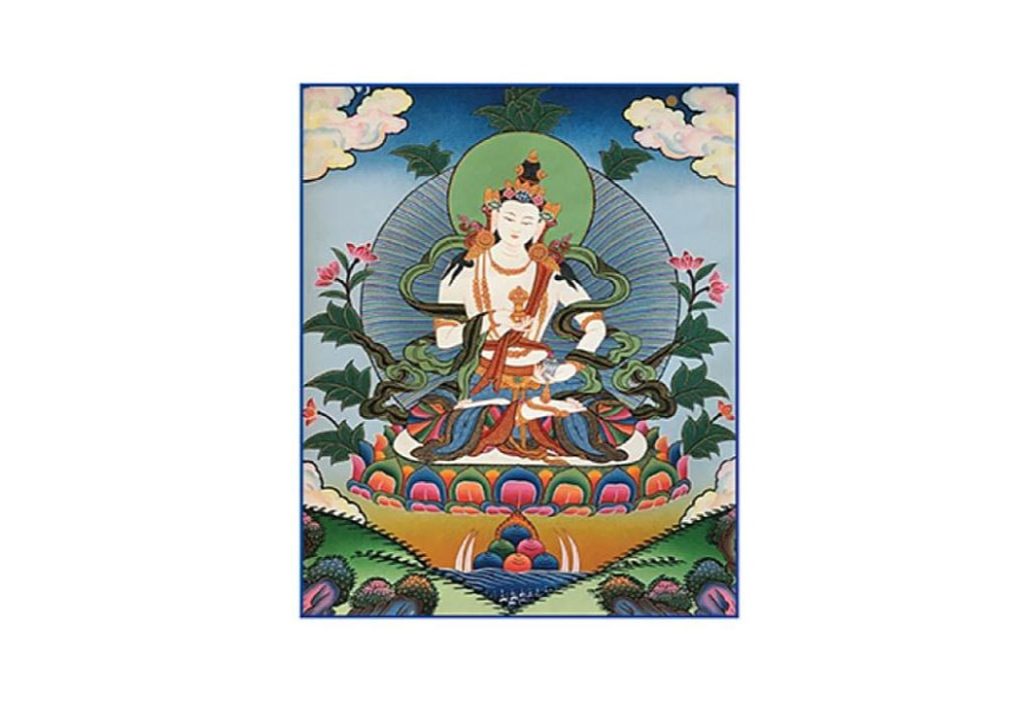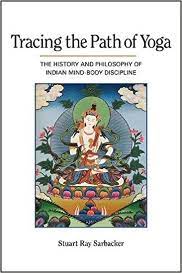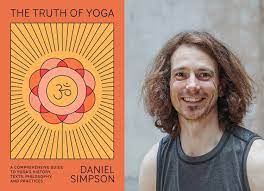
Understanding Yoga History and Philosophy
If you want to understand yoga history and philosophy you can’t beat a good book. Here, Peter Donahue explores two must-reads for every yoga student, teacher or scholar
I began my yoga practice mid-life with a rather cranky body. Before long, with the help of experienced instructors and plenty of props, I was doing poses I never imagined possible. Then, a year into my practice, one of my instructors invited me to a monthly Sutra Study group she ran. “You mean there’s more to yoga,” I asked her. And…“What’s a sutra?”
Since then I’ve read many books on yoga history and philosophy, taken online courses with brilliant teachers through programmes such as Yogic Studies, and begun learning Sanskrit. Nonetheless, given how ancient and vast yoga is, my understanding of its history and philosophy always seemed piecemeal at best — and probably was.
 That has changed with the publication of The Truth of Yoga by Daniel Simpson and Tracing the Path of Yoga by Stuart Ray Sarbacker. These two lucid, well-researched books make it possible to identify the many interconnections within this phenomenally multifaceted subject while also taking in the broader picture of yoga history and philosophy. In other words, to see the trees and the forest.
That has changed with the publication of The Truth of Yoga by Daniel Simpson and Tracing the Path of Yoga by Stuart Ray Sarbacker. These two lucid, well-researched books make it possible to identify the many interconnections within this phenomenally multifaceted subject while also taking in the broader picture of yoga history and philosophy. In other words, to see the trees and the forest.
The Truth of Yoga
The Truth of Yoga by Daniel Simpson, a former foreign correspondent who now teaches at the Oxford Centre for Hindu Studies, is the more accessible of the two works. Simpson places the history into four chronological blocks: Early Yoga, Classical Yoga, Hatha Yoga, and Modern Yoga. Within each he examines a wide variety of topics in clear, concise, readily digestible subsections, making The Truth of Yoga the perfect primer for the instructor-in-training or the ordinary practitioner wishing to explore yoga beyond the purely postural.

Courtesy Daniel Simpson
Simpson opens with two fundamental facts: (1) that there is no one true yoga, and (2) that yoga is a practice, not a belief. Later Simpson adds: “Practically speaking, yoga is about our relationship with everything.” He uncovers its deep roots in the religious-spiritual-cultural traditions of India, and always returns to the notion of yoga as a practice. He cites the very first commentary on Pātañjali’s Yogasūtra (3.6): “Yoga is to be known by yoga, and yoga itself leads to yoga. He who remains steadfast in yoga always delights in it.”
Simpson goes on to examine the many factors that contributed to yoga’s development, from ritual and renunciation to mantras and meditation. He cites references to yoga in the earliest sacred texts, the Vedas and Upanishads, to trace how key concepts and practices, such as Pratyāhāra [sensory withdrawal] and Dhāraṇā [concentration] took hold. He also considers the relationship of yoga to Buddhism and Jainism, as well as the many forms that yoga can take, such as devotional (bhakti) and action (karma) yoga, as exemplified in the Bhagavadgītā. Simpson charts the rise of postural yoga with the advent of Hatha yoga and the shift to a greater focus on the body with Tantric yoga, including the “subtle body” of the chakras (energy centres) and nadis (energy channels).
Simpson’s efficiency allows him a broad scope. He covers the impact of colonisation on yoga, as well as how yoga was transformed with its propagation in the West through figures such as Swami Vivekananda and BKS Iyengar. He recognises how yoga has often been grossly commercialised and politicised, and also how certain “gurus” have used yoga to exploit their followers. As a practitioner himself, Simpson remains respectful of his subject, yet he allows himself occasional editorial comments and moments of levity, which make his works highly readable. Ultimately, he affirms how diverse and adaptable yoga is, which makes its benefits available to anyone. “Yoga helps us to see from a different perspective,” he says. “How we interpret what we learn is up to us.”
The Truth of Yoga
Tracing the Path of Yoga by Stuart Ray Sarbacker covers much of the same ground as The Truth of Yoga, though it does so in a more scholarly manner. Sarbacker, an Oregon State University professor specialising in Indic religion and philosophy, expounds on the concepts introduced in The Truth of Yoga, beginning with his definition of yoga: “In its primary sense, yoga is a set or a system of techniques of mind-body discipline…that aims to transform a practitioner into a more perfect being so as to (1) make them more powerful and/or (2) facilitate liberation from worldly afflictions.”

Stuart-Ray-Sarbacker - Courtesy Oregon State University
He delves into yoga’s “prehistory” in the Indus Valley and the Vedic tradition that emerged from it. He emphasises the role of asceticism in yoga, comparing Brāhmaṇical tapas (asceticism) with Buddhist and Jain Śramaṇa (asceticism). Coming to the classical period, he points out how Aṣṭāṅga [eight-limb] yoga, namely through Pātañjali’s Yogasūtra, aims to reconcile the tension between asceticism and ritual as practices that lead to Mokṣa (enlightenment). He also views classical yoga as a kind of fulcrum between established Vedic traditions and emerging bhakti [devotional] and tantric practices, accommodating the former while anticipating the latter. Although Sarbacher’s extended explication of Buddhist Śramaṇa is challenging to read, it’s good to be made aware of this complex tradition, especially in regard to how one branch of it in particular, Yogācāra (Buddhist yoga practice), influenced Pātañjali. Fortunately, like Simpson, Sarbacker breaks his discussion into manageable subsections, which is helpful with the more esoteric topics — and even with the more basic topics, such as the Mahābhārata, Rāmāyana, and Purāṇa texts, or the Śaiva, Vaiṣṇava, and Śakta traditions. Sarbacher wraps up his study with brief but elucidating overviews of modern yogic history, descriptions of currently practiced forms of yoga, and biographies of seminal figures in modern yoga.
Just as no one does tree pose (Vrikshasana) perfectly the first time, no one absorbs yoga history and philosophy in one go-round. “How do you get to mokṣa?” the seeker asked the guru. “Practice,” replied the guru. Just so, how do you achieve an understanding — and appreciation — of yoga history and philosophy? Study. The Truth of Yoga and Tracing the Path of Yoga are two great places to start.
The Truth of Yoga: A Comprehensive Guide to Yoga’s History, Texts, Philosophy, and Practices (North Point Press, 2021) by Daniel Simpson
Tracing the Path of Yoga: The History and Philosophy of Indian Mind-Body Discipline (SUNY Press, 2021) by Stuart Ray Sarbacker







